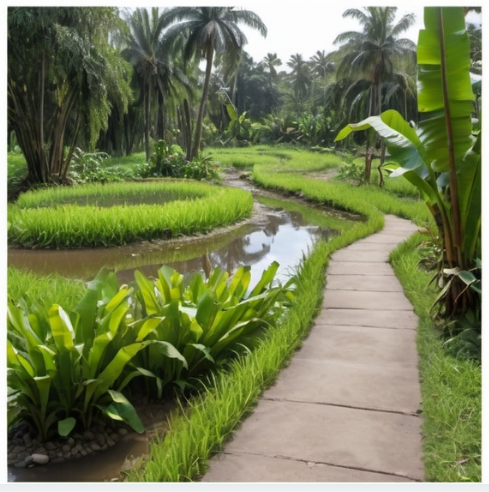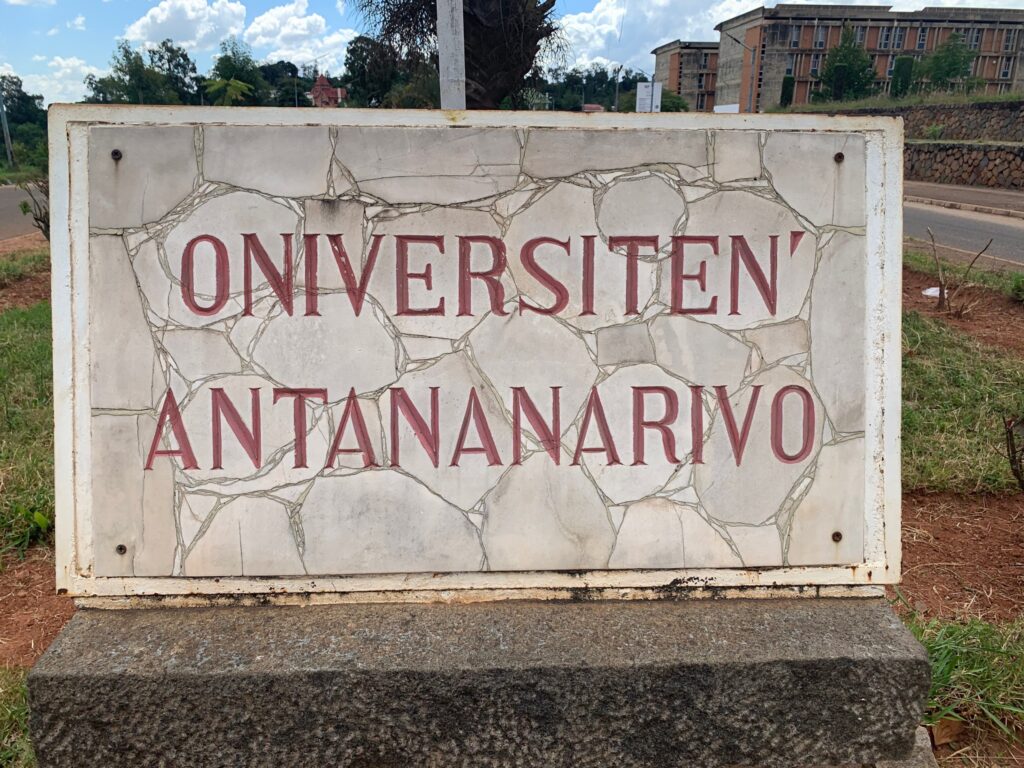
The Garden of Eden Project Wetlands Rice Permaculture Research Center: Economic Viability and Strategic Value
Introduction
The Garden of Eden Project Wetlands Rice Permaculture Research Center at the University of Antananarivo, developed in collaboration with the Jacquelyn Sanders Foundation, is a visionary initiative aimed at creating a sustainable, multifunctional agricultural research space. Through the integration of wetlands, pond-based crops, and natural water filtration systems, the project will provide essential infrastructure for clean water, food production, tree conservation, and academic research. The center’s value extends far beyond immediate profit, offering a living system that delivers water, food, and trees as essential infrastructure for the university and local community.
This report emphasizes the living value of the project: a self-sustaining ecosystem that generates not just revenue but essential resources. The center will provide potable water, agricultural research opportunities, and a model for sustainable farming practices across Africa. While the facility will generate income, particularly from water crops and research activities, its primary mission is to foster resilience through innovative ecological design.
Phytoremediation with Water Hyacinth: Enhancing System Value

A central innovation in the wetlands system will be the inclusion of water hyacinth. This fast-growing aquatic plant offers multiple ecological and operational benefits:
- Phytoremediation: Water hyacinth is a proven tool for removing toxins, heavy metals, and excess nutrients from water bodies. By incorporating water hyacinth into the wetlands, the university can enhance the filtration capacity of the system, ensuring cleaner water for the university’s potable water needs.
- Composting and Biochar Production: After being harvested, water hyacinth biomass can be converted into compost or biochar. Biochar is particularly valuable in this system as it can be used to improve soil fertility and as a filter medium for water purification. The cyclical process of growing, harvesting, and converting the water hyacinth feeds back into the wetland system, creating a self-sustaining model that reduces waste and enhances productivity.
- Composting: Provides organic material to enrich soil for crop growth, contributing to the productivity of rice, lotus root, and water chestnuts.
- Biochar: As a carbon-rich material, biochar improves soil quality and serves as a filter in water purification processes, ensuring clean water for reuse within the system and the university.
Through these processes, water hyacinth transforms from an invasive species into a valuable resource, strengthening the ecological and economic potential of the wetlands.
Living Profits: Water, Trees, Food, and Research

The wetlands permaculture center provides more than just financial returns. Its true value lies in the living profits it generates—clean water, biodiversity, and sustainable food production.
1. Water Security for the University
The primary function of the constructed wetlands is to ensure water security for the University of Antananarivo. Through natural filtration processes, including the use of water hyacinth for phytoremediation, the system will deliver potable water for students, staff, and faculty. This essential infrastructure eliminates the need for expensive external water sources, providing the university with a reliable, sustainable supply of clean water.
2. Tree Conservation and Reforestation
With abundant water available through the wetland system, the university will be well-positioned to engage in tree conservation efforts. Madagascar’s national reforestation goals align with the university’s potential to contribute by nurturing saplings in a controlled, water-rich environment. This initiative positions the university as a key player in Madagascar’s environmental restoration efforts, further enhancing its reputation as a center for sustainable development.
3. Sustainable Food Production
The research center will cultivate water-efficient crops such as rice, lotus root, and water chestnuts, all of which thrive in pond environments. While the primary revenue may come from the sale of lotus root and water chestnuts in local and international markets, there is also an opportunity to contribute to food security by providing fruit from planted trees to the university community and local residents. This approach fosters community engagement and strengthens the university’s social responsibility.
The value of these crops is not only in the food they produce but in the research and knowledge they generate. The center will become a focal point for studying sustainable farming practices, crop resilience, and biodiversity. The information gleaned from this research will be invaluable for other African nations seeking to improve their agricultural systems in response to climate change and water scarcity.
4. Research and Eco-Tourism
The wetlands research center presents significant opportunities for research funding and eco-tourism:
- Research Funding: The center’s unique focus on sustainable wetland agriculture and permaculture practices will attract research grants from governments, international institutions, and NGOs. Key research areas such as phytoremediation, water-efficient agriculture, and biodiversity conservation align with global priorities for addressing environmental challenges.Furthermore, as the only facility of its kind in Africa, the research center is well-positioned to collaborate with universities, governments, and private institutions across the continent. Knowledge transfer and capacity-building initiatives will ensure a steady flow of researchers and students from across Africa, eager to learn and implement pond-based crop systems in their home countries.
- Eco-Tourism: Beyond research, the constructed wetlands will serve as an eco-tourism attraction, drawing visitors interested in permaculture, sustainable agriculture, and environmental restoration. Educational tours, workshops, and volunteer opportunities will create additional streams of income and increase the university’s profile as a leader in sustainable innovation.

Operational Sustainability: Meeting Maintenance Costs
While the constructed wetlands will deliver immense value in terms of water, food, and ecosystem services, the project must be economically self-sustaining. It is reasonable to assume that the sale of water crops (such as lotus root and water chestnut) will cover the facility’s annual maintenance costs. These crops have high market demand and are well-suited to wetland environments, ensuring steady revenue generation.
However, the primary long-term funding sources will likely come from research grants and partnerships. African nations, particularly those facing water scarcity and food insecurity, will look to the University of Antananarivo as a model for sustainable agricultural practices. The center’s research services and expertise in water-efficient crop systems will be in high demand, providing a reliable and sustainable source of income for the university.
Capital Investment: Projected Construction Costs
Building this cutting-edge research and agricultural center will require a significant initial investment, primarily to develop the wetlands system, water management infrastructure, and integrate renewable energy technologies. Below are the primary components of the project’s construction costs:
- Wastewater Management System (Subsurface Flow Wetlands)
To handle wastewater management in a sustainable and eco-friendly manner, a subsurface flow system will be developed in the northern section of the wetlands. This system, which uses natural wetland processes to treat and filter water, is projected to cost approximately $200,000 USD. It will serve as a critical component in maintaining water quality for agricultural use and as potable water for the university. - Freshwater Ponds and Photovoltaic Pumping Systems
The freshwater pond system, necessary for irrigation, aquatic crop cultivation (such as rice, lotus root, and water chestnuts), and water storage, will be combined with a photovoltaic-powered pumping and filtration system. This system will supply the water services buildings and filtration facilities across the wetlands research center. The cost of building this infrastructure is estimated at $250,000 USD. - Botanical Expansion and Landscaping
In addition to its agricultural and research functions, the center will contribute to the university’s botanical garden expansion, incorporating hundreds of tree species, many of which are clonable and part of national conservation efforts. These trees, combined with extensive landscaping to integrate wetlands research into a natural, educational setting, will require an investment of around €50,000 (roughly $55,000 USD).
These components bring the total projected construction cost of the Garden of Eden Project to $500,000 USD. This figure includes all necessary infrastructure for wastewater treatment, freshwater management, renewable energy systems, and ecological landscaping.
Ongoing Operational Costs and Medium-Term Goals
Once the facility is constructed, it will require regular maintenance, research support, and operational oversight to keep it functioning optimally. The annual maintenance and operational costs of the facility are expected to fall within the range of $200,000 to $300,000 USD per year. These costs encompass:
- System upkeep and repairs for the wastewater and freshwater infrastructure.
- Labor and operational costs for managing aquatic crops, phytoremediation systems, and water filtration.
- Research equipment, facility management, and staff salaries.
Path to Self-Sufficiency
The medium-term goal of the project is to generate sufficient revenue from research grants, partnerships, and agricultural wetlands products to cover these ongoing maintenance costs. Research conducted on the wetlands system—focused on topics such as sustainable rice farming, wetland crop synergies, water filtration techniques, and ecological restoration—will attract research grants from international and national institutions.
The sale of agricultural products such as lotus root, water chestnuts, and biochar (from water hyacinth) will contribute additional revenue, though the primary financial sustainability will likely come from research-driven funding sources. Furthermore, as the research center gains prominence, it will attract interest from governments and universities across Africa, increasing its capacity for consulting, educational tours, and research collaborations.
Funding Strategy and Timeline
To ensure the success of the project and its path toward financial self-sufficiency, an estimated $1 million USD in funding is needed. This amount will:
- Cover the construction of the wetlands system (including wastewater and freshwater components).
- Fund the expansion of the botanical garden and landscaping efforts.
- Sustain the facility for 3 to 4 years until it becomes financially self-sufficient through research grants, eco-tourism, and sales from water crops.
This funding goal includes a buffer to maintain operations during the initial years while the project builds its reputation as a leading research facility. With the right partnerships and grant applications, the facility is expected to attract substantial interest from the global community focused on sustainable agriculture, water management, and climate resilience.
Next Steps
The Garden of Eden Project Wetlands Rice Permaculture Research Center is now poised for the critical next phase: securing funding and technical support. The successful implementation of this visionary project will require collaboration with international NGOs, government agencies, and private foundations that prioritize sustainable agriculture, water management, and climate resilience. Funding applications will target organizations that specialize in environmental research, phytoremediation, and sustainable development. Technical support will be sought from institutions with expertise in constructed wetlands, biochar systems, and permaculture design. Establishing partnerships with these entities will not only ensure the financial viability of the project but also enhance its scientific rigor, positioning the university as a center of innovation in ecological restoration and water conservation for Madagascar and Africa. The engagement with these stakeholders will be pivotal in transforming the project into a reality that delivers long-term environmental, social, and economic benefits.
Conclusion
The Garden of Eden – Wetlands Rice Permaculture Research Center is an ambitious and transformative initiative that will enhance the University of Antananarivo’s academic and research reputation while addressing critical environmental challenges. By integrating natural wastewater management, aquatic agriculture, renewable energy, and botanical conservation, the project delivers a holistic, sustainable system that provides water security, food, and ecological benefits.
While the projected construction cost is approximately $500,000 USD, an additional $500,000 USD is required to cover operational costs during the early years. This $1 million USD investment will build a facility capable of becoming self-sufficient within 3 to 4 years, sustained by research income, eco-tourism, and agricultural production. This innovative project will position the university as a leader in sustainable research and permaculture in Africa, with far-reaching impacts on food security, water management, and climate resilience.


